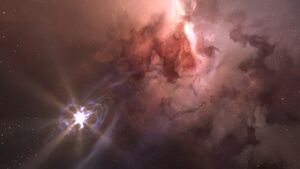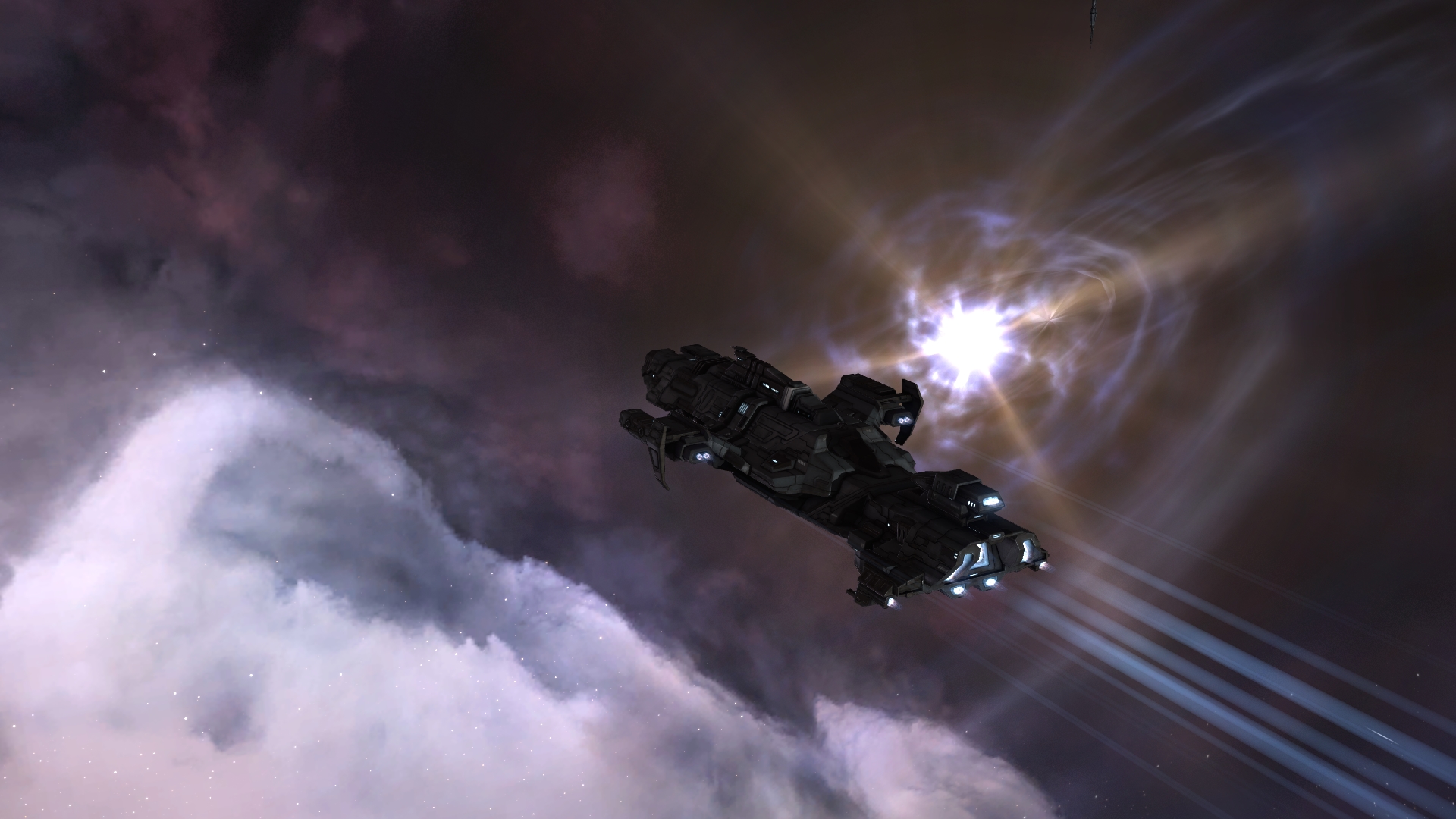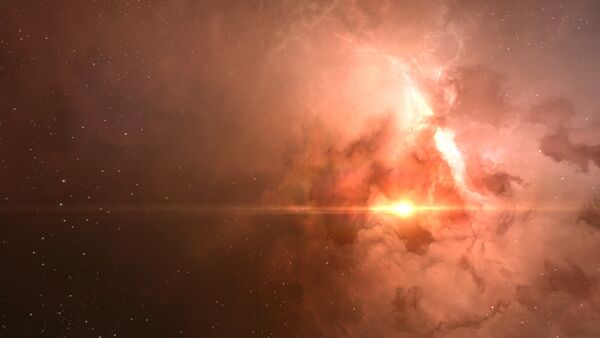As of 7/27/25, the old EvE-Scout Forums are now offline until further notice.
Public:Katia60 Why Not Random
W-Space – Why You Not Random?

“Adventure is a state of mind and spirit.” – Jacqueline Cochran, American Aviation Pioneer
10.4.yc118 (2016) J233630 System < Constellation E-C00262 < Region E-R00026
When I began my exploration of wormhole space just a little over three months ago, I had decided to base out of Thera. I felt it was a great place to start with random wormholes appearing daily. Being a member of Signal Cartel brings the benefit that most would be scouted already and taking advantage of that, I could quickly knockout several systems daily. Then I’d have to resort to scanning on my own which takes some time. With over 2,500 wormhole systems and assuming complete randomness with the connections, statistically, it should’ve been some time before I started finding systems that I’ve previously visited. At least that was the theory. But there’s something odd going on in wormhole space and it’s not the space affects that I’m talking about. The randomness of wormholes connections in each system doesn’t seem to be so random after all.

On my tenth day into exploring W-Space while based in Thera, I encountered my first duplicate system. I had only previously explored a total of 17 systems, so my chances of finding a duplicate system should have been less than 1%. Yes, I hear you and understand, less than 1% chance is still a chance, so with a raised eyebrow, I continued to base from Thera. But here’s the thing, as I proceeded to explore, duplicate systems kept coming up, beating the odds of finding them until finally at the end of March with only 10% of W-Space explored, my odds of seeing duplicates seemed closer to 30%. I decided to forgo basing in Thera and have been wandering ever since.
Now with my supposedly random wandering it gets more interesting. This last week, just the last few days really, has convinced me of the not so randomness of W-Space, that there’s a pattern to the chaos. One day, I hit system after system that I had previous explored, until finally I found one I had not. It was around ten systems, making that day’s odds over 90% likely to find systems I’ve already been to. What? How? It gets more interesting. The next day, I found system after system I had NOT been to yet, making that day’s odds over 90% likely to find systems I’ve NOT already been to. Very odd.

I don’t have an answer, so what am I proposing? I believe wormhole systems cluster together and connect more often than not to the same systems over and over again. Granted, I believe the clusters are rather large groups, maybe upwards to 600 or even 700 systems or so, but based on my experience so far, it would fit the odds I’ve been experiencing.
I’d be curious to hear from folks that actually have lived in a single wormhole system for a long period of time. Have you noticed or have you seen yourself connecting to the same systems over a period of several months? It’d be difficult to prove and take a lot of observation from multiple systems, but it is interesting never the less.
Fly Clever!
Katia
UPDATE: After some discussion on Twitter and further reflection, the more I’m beginning to think there may be a light year limit between systems and their ability to connect to each other via wormholes regardless if they’re K-Space or W-Space.
Comments
"This is a really interesting observation. I look forward to further information on this. (Obviously true random is not possible in a programmed random generation equation)" - Talus Veran
"Thanks Talus! It is indeed interesting. (I’ve thought about the programmed random generation as well being flawed.)" - Katia Sae
"I’ve noticed in my travels that wormholes that I’ve lived in would seem to exit to same regions over and over – like 50% chance of it being Derelik or Black Rise from my lowsec static. COULD be that RNG thing people talk about, maybe I was lucky but it was remarkably reliable. I didn’t chart it but would be interesting to have a few people in similar class wormholes to see what exits they get after 30 days.
This sort of stuff I love about Eve Online, it’s real exploration" 🙂 - Lulu Lunette
"Great information Lulu. I know folks have pondered and tried to prove that W-Space sits in close relation to K-Space which could explain what you’ve observed as well as tie this into it. It is almost like when I find one I’ve been to, I end up going down a chain like I would in a K-Space pipe that I’ve already visited." - Katia Sae
"I wonder if something to do with the buff of low sec low sec connections awhile back and more recently the reduction of wh nullsec connections has affected the randomness of everything else. We seem to see a fair bit of repetitiveness in the Thera connections." - Mynxee
"I’ve also noticed it seemed the Thera W-Space connections have become fewer, another reason why I went off wandering. I do find Lulu’s observation interesting and it also leads to the other theory that the counterpart to W-Space is in close relation to K-Space. Like maybe something along the lines of K or W Space systems within X light years of each other can only make connections within the static and random classifications." - Katia Sae
"After living more than one year in a C3, I also found there are neighboring wormholes that appears more often than totally random ones. I would say the same applies to regions in k-space too, mine had a K346 static and it ended more often in some k-space regions." - Borat Guereen
"Living in a c5 > c3 i find that k-space from those c3 lean towards amarr space… maybe wh.system are somewhat tied to regions in k-space" - Noumene
"Well I think a part of what you’re looking for is here: http://wormholes.info/wordpress/about-wormholes-wormhole-maps/
And mostly the last picture down there ->

That kind of sets the WH systems by class and their overall position according to known K-space. Now, you might connect that map with some data about the wh connections between systems with an approximate distance in light years. You’ll need a lot of statistical data for this though. And there maybe you can find that pattern, you’re looking for." - Pileto
"“Entire constellations of wormholes are grouped by their statics. In other words, if a C2 has static C2/Lows, every other wormhole in the same constellation will have the same statics. This is based on the way wormholes are stored and calculated by the server.”
Did you consider this?
Found here:" http://wormholes.info/wordpress/about-wormholes-classes-of-wormhole/ - Jasperwillem
"Absolutely and thanks for pointing that out. I should have the write-up out in a week or two." - Katia Sae
"Hi,
looking at your observation of finding a duplicate wormhole from theta after exploring only 17 systems i wrote this small program to check what would be the chance if it was truly random.
I simulated 1000 people doing this experiment. exploring 1000 random systems and seeing after how many tries they get their first duplicate.
The average seems to be that after around 62 tries you get your first duplicate.
number of people encountering a duplicate within the first 30: 151 (15.1%) number of people encountering a duplicate within the first 20: 69 (6.9 %) number of people encountering a duplicate within the first 10: 12 (1.2 %)
So i guess you just got your first duplicate very early
This is a fun experiment 🙂" - Ronnie
"i don’t know if you can program but find the program below. Its in python.
To keep it simple i used the following assumptions – there are 2500 W-space systems – W-space systems are numbered 1 to 2500 – every W-space connection from thera has an equal chance of appearing
I run the simulation 1000 times and count how many wormholes i get to explore before the first duplicate. This is equal to drawing random numbers between 1 and 2500 until i get a number i already had.
import random
experimentmax = 1000
iterationmax = 1000
random.seed()
results = []
for exp in range(1,experimentmax):
wh_explored = []
for iteration in range(1,iterationmax):
wh_new = int(random.random()*2500)+1
if wh_explored.count(wh_new) > 0:
print iteration
results.append(iteration)
break
else:
wh_explored.append(wh_new)print “average = “, sum(results)/float(len(results)) - Ronnie
"i was thinking about extending this program so i can also run some simulations on W-space to low-sec/high-sec/null-sec systems. And what we should expect here based on pure randomness." - Ronnie
"For me, and I know not all, but really fun and interesting to work with. Keep it up, let me know your continued results. Currently, I’m reviewing the data and looking at the K162’s to see if any interesting patterns emerge." - Katia Sae
"For now i downloaded the Eve static data dump. Which has data on all systems. K-Space as well as W-Space. So i know exactly how many systems there are.
For some reason W-Space systems are also grouped in Regions. This might have an effect on which systems connect with which. The more a read about wormholes the more interesting it gets" 🙂 - Ronnie


